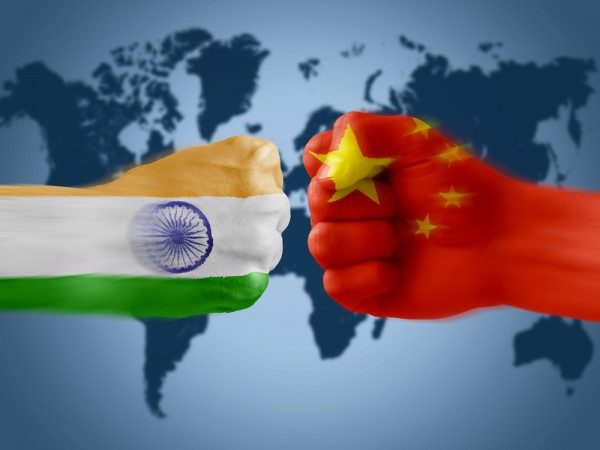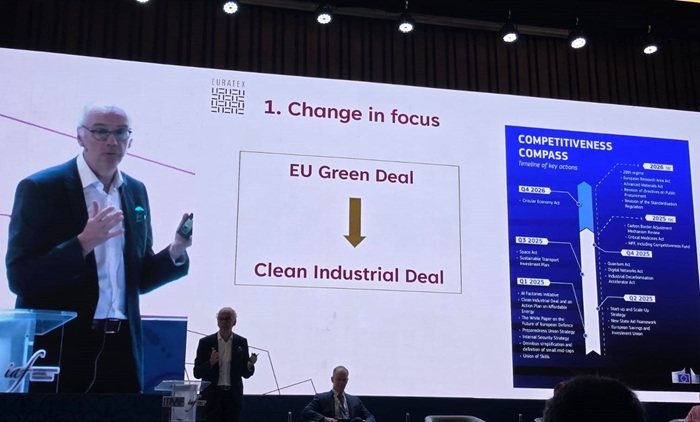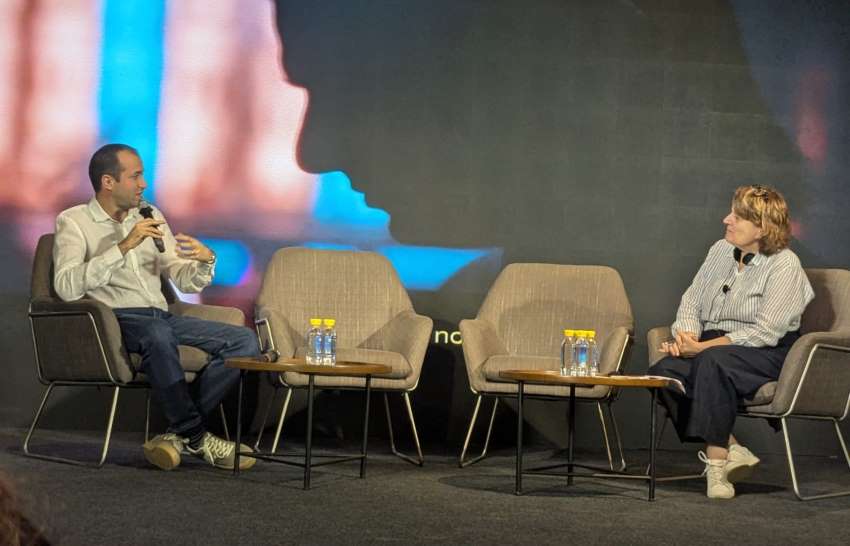FW
Vietnam is one of the world’s top apparel exporters. But 70 per cent of its textile makers are working as sub-contractors on medium and small scales and are still weak in fiber manufacturing, weaving and dyeing. Almost all input materials come from China and Korea. The rate of locally-made products in the sector stands at a mere 55 per cent due to the weak weaving and dyeing capability.
Weaving and dyeing projects fail to receive licenses due to their high risk of environmental pollution. What’s needed is zoning off regions and areas exclusively designed for weaving and dyeing and equipped with infrastructure and waste treatment facilities.
Vietnam faces another challenge. Once the Trans-Pacific Partnership (TPP) comes into force, regulations on the origin of goods will follow. Vietnam must follow TPP’s yarn-forward rule of origin which requires that only textile and apparel products using the US and other TPP countries’ yarns and fabrics qualify for the benefit of the agreement.
The strength of Vietnam’s textile and garment industry is that only a small capital investment is called for. The payback period is quick because of a short capital turnover. The industry gets preferential policies. Greater product differentiation and specialisation can boost margins.
CHIC Autumn will take place for the first time from October 13 to 15 where around 600 exhibitors are expected to display their range. In March 2016, the Spring edition will take place at the modern National Exhibition and Convention Centre, Shanghai, opened last year. Along with CHIC Autumn, Intertextile Shanghai will take place at the same fairground.
The CHIC autumn event caters to domestic market opening the way for Chinese consumer market for smaller high-end brands with less volume. Matchmaking, networking and further activities will be organised to connect international brands with Chinese retailers underlining the position of CHIC as mediator in the fashion business.
The autumn edition, is spread across smaller area compared to the spring edition held in March. It gets ready as a platform to focus on the merchandise and not so much on branding through enormous image booths. The new date in October will focus on spring/summer collections in all categories including women’s wear, menswear, kids’ wear, shoes/bags/accessories and swim/bodywear.
Much like the March edition, the concept of ‘Show in Show’ will continue. London PURE organiser will host around 50 exhibitors at its pavilion called PUREShanghai. Six brands from UK such as Henry Todd, Raaah, Dabra, Ness, Virgos, Pearls & Portraits will exhibit their collections along with brands from Poland, Thailand, Greece, Turkey, Trinidad & Tobago, Spain, Croatia, USA and Australia, who will be joining PUREShanghai in October.
Preview in China, the South Korean trade show will also be participating at CHIC in October. The Brazilian show association Abicalcados will have a pavilion. And France with brands like Léo & Ugo, Johntex, Zyga, Urbahia Paris and Italy with brands such as Paola Graglia, Giovanni Fabiani will be participating with their respective national pavilions.
En.chiconline.com.cn
Victoria & Albert Museum (V&A) in UK will host India festival 'The Fabric of India’, from October 3, 2015 to January 10. This is the first major exhibition to explore the dynamic and multifaceted world of handmade textiles from India, spanning from the 3rd century to the present day. Showcasing the best of the V&A’s world-renowned collection together with masterpieces from international partners and leading designers, the exhibition will feature over 200 objects, many on display for the first time.
Visitors can expect a stunning range of historic dress, heirloom fabrics, and cutting-edge fashion. India’s rich natural resources for making and decorating textiles are unrivalled. Its varied geographical regions and climates provide a huge range of plant fibres and natural dyes for the cultivators, weavers, dyers, printers and embroiderers of the subcontinent.
Over centuries, most regions developed specialities based on local conditions, such as the golden silks of Assam, the fine cottons of Bengal, or the red dyes of south-east India. Craftspeople use an astonishing range of skills to process raw materials and produce regionally distinctive dyes, weaves, prints and embroideries. The exhibition will display rare pieces collected over the years depicting rich textile heritage of the country.
As the world's leading museum of art and design, the V&A promotes the practice of design and increases knowledge, understanding and enjoyment of the design world.
The Haryana Skill Development Mission (HSDM) of the government of Haryana has signed a MoU with the Apparel Made-Ups & Home Furnishing Sector Skill Council (AMH SSC). The MoU was signed by Subhash Goel, IAS and Roopak Vasishtha, CEO and Director General, AMH SSC under which all the training providers of HSDM, across Haryana will get aligned to the AMH SSC for the skill-training in the apparel, made-ups and home furnishing sector by aligning their course curricula to the National Occupational Standards (NOSs) of the AMH SSC and shall be assessed and certified by the AMH SSC.
The certifications of the AMH SSC, which has been formed by the NSDC would have national/international recognition and would help the youth of Haryana state not only to get decent employment in India but they would also become eligible for international openings. This step would also immensely contribute to the ‘Skill India’ and ‘Make in India’ missions of the Indian government.
www.sscamh.com
The twin-shows the seventh edition of Yarnex and fourth edition of TexIndia concurrently began from September 10, 2015, at the India Knit Fair Complex in Tirupur. The shows are organised under the banner of Textile Fairs India, by SS Textile Media from Bangalore.
While Yarnex has 51 exhibitors displaying textile products like value-added fibres and yarns, TexIndia is showcasing apparel fabrics, trimmings, embellishments of 41 exhibitors. Suppliers of services related to the textile and apparel industry too are also present at the shows.
Among the renowned companies exhibiting at Yarnex are: Reliance Industries, Indian Rayon from the Aditya Birla Group, Indorama Industries, Grasim Industries, RSWM, Amarjothi Spinning Mills, Brightex Corporation from Japan, Damodar Industries, Pallavaa Group, Vardhman Textiles, Trident, Winsome Group, The Lakshmi Mills Company, among many others.
The value added fibres and yarns on display at Yarnex include: spandex fibres, BCI yarns, organic yarns, colour mélange and dyed yarns, modal yarns, recycled polyester yarns, metallic yarns, iridescent yarns, antique yarns, fancy yarns, grindle yarns, indigo yarn, vortex yarn, compact yarns and many others.
A few of the participants at TexIndia are: Adonis Intex, Niharika Creations, Colorsburg, Linz Textil GMBH from Austria, Jain Narrow Fabrics, Netflex (India), PK Astir & Co, Pranera Digital, Laya, Sanya Fabrics, Sri Kalyan Exports, Matrix Enterprises, Versatile Enterprises and Transknits. Exhibitors are showcasing organic fabrics in various blends, wool fabrics, Tencel fabrics, silk fabrics, solid dyed and yarn dyed knitted fabrics, different types of lace and crochet fabrics, various types of zippers, hangers, elastic tapes and webbings, badges, barcodes, labels and tags.
For the first time, TexIndia has also brought together, job workers and knitwear manufacturers and exporters to interact with each-other under one roof. Knitwear manufacturers and brands can find job workers to outsource their requirements at TexIndia. Major exhibit job worker categories include circular knitting, flat knitting, dyeing, finishing, printing, embroidery and garmenting.
www.fnashow.in

Rupee’s worst devaluation may boost exports

After Chinese currency yuan was first devalued on August 10, rupee recorded its sharpest decline among competing countries including China, Vietnam and Bangladesh. Since August 10, rupee has depreciated by 4.63 per cent to 66.83, while yuan is down 2.51 per cent to 6.37 against the dollar.
Among other competing countries, Vietnamese dong slumped by 2.96 per cent to 22,468 against the dollar on the same day from 21,823 dong on August 10. But Bangladesh's currency appreciated by a negligible 0.06 per cent to 77.73 on Monday against the dollar from 77.78 on August 10. While an ICRA study says the depreciation in rupee would benefit apparel exporters, it also points out that since yuan has also depreciated and given that China enjoys dominant position in export markets, India would see increased pricing competition which will affect profitability of exporters. Also, with drafts of new contracts mentioning renegotiation clause if rupee depreciates beyond 2-3 per cent, buyers will immediately start price negotiations hurting exports. However, given that the rupee has depreciated more than that of other competing countries, and India’s share in overall trade is relatively small, experts expect export volumes may not be impacted severely.
Diversified fabric players may have lower prices
Fabric exports, on the other hand, are geographically well diversified as against other segments in textile exports. Given the fragmented nature of India’s fabric industry, Indian exporters will have to pass on the benefits of depreciated rupee by way of lower dollar price. India’s cotton exporters would see improved competitiveness, being the second largest exporter of the natural fibre after the United States.
Nevertheless, as China is the largest market for both cotton and cotton yarn exports from India, higher devaluation of China’s yuan will require Indian exporters to offer lower dollar prices for these products to maintain competitive prices in yuan terms. Meanwhile, as per a report by the Centre for Monitoring Indian Economy (CMIE), the cloth industry in India witnessed a healthy growth in revenues during the June 2015 quarter. Aggregate net sales of the 54 companies that reported their interim results grew by eight per cent year-on-year during the period. Growth in sales was broad-based with 36 companies registering higher sales.
www.icra.in
Australia will set up a new wool supply chain in Vietnam. The goal is to sell greasy wool to Vietnam’s fledgling wool industry. Australia wants to reduce its heavy reliance on China and create new business opportunities elsewhere in the world. Australia has so far partnered 91 manufacturers, mainly knitters, teaching them to produce quality clothing from Australian wool. Of them, 43 are technically competent, making products from Australian wool and sending most of them into Japan and Korea.
The second stage of the supply chain is working with companies and teaching them how to produce wool yarns from Australian wool for the knitting sector. Small ranges will be launched in different colors, around 20 colors at first, and will be supplied to the local spinning industry.
Vietnam is seen as a good market for Australian merino garments. The country is politically stable, has low labor costs, about one-third that of China. It has skilled textile workers although they use synthetics rather than wool. Vietnam has signed free trade agreements with Japan, Korea, the European Union, and is close to signing the Trans-Pacific Partnership. In addition, Vietnam has emerged as one of the fastest growing exporters of textile products.
Bangladesh has a huge opportunity to grab a large share of global jeans market with many good factories and buying houses. After China, Bangladesh is the largest manufacturer of apparel products, which reputed international brands source from. At present, denim manufacturers in Bangladesh use fabrics of different kinds: regular, knit, jacquard, printed, colored and coated. Over 60 per cent of their denim fabric requirements are met by imports from China.
Bangladesh finds itself unable to manufacture denim fabrics to meet local demand. Reason: lack of technical expertise and infrastructural facilities, insufficient utility services and insufficient funds. At present, there are 25 factories in Bangladesh producing denim fabrics. The country produces 360 million yards of denim fabric a year but its manufacturers have a demand for 720 million yards a year.
But since Chinese apparel manufacturers are shifting from lower-end to higher-end, and changing their business patterns, Bangladesh can move in to fill the gap. It’s reckoned that by 2030 around 70 per cent of the global demand for jeans would be met by Asian producers. Bangladesh’s denim apparel exports are expected to reach $7billion by 2021.
Egypt and Bangladesh were the largest importers of PC yarn from India in July, followed by Turkey. South Korea and Bahrain were the major destinations among the 16 new markets found in July. The US, Argentina, Sri Lanka and Portugal were the fastest growing markets for PC yarns while Mexico, Venezuela and Ukraine significantly reduced their import of PC yarns from India.
In July, $9.8 million worth of PV yarns were exported from India. Turkey and Pakistan continued to be largest importers of PV yarns from India in July with a total volume at 1.95 million kg worth $5.7 million. Tunisia was the new major market for PV yarn from India.
China’s demand for cotton yarn has dropped considerably due to a change in policies. Margins on some products are negligible at the moment while some products are selling at a loss as well. China has also reduced its fabric production due to which yarn imports have been impacted. Indian spinners hope for a revival of cotton yarn demand, once the festival season sets in. The revival of US economy and the Euro zone will help spur demand.
Vietnam's garment workers have been granted a pay hike of 12.4 per cent but factory owners want to make that six or seven per cent. They say, a wage hike beyond 6 to 7 per cent would prevent them from making profits, and likely lead to shutdowns and layoffs, ultimately weakening the country’s competitiveness.
They argue even a 10 per cent pay increase would lead to a more than $1.03 billion increase in total labor costs for the 2.5 million workers employed in the sector, including $387 million for insurance payments and $23.6 million for labor union fees. A six to seven per cent increase, on the other hand, would cost a relatively affordable $756 million in additional labor costs.
Regional minimum wages in Vietnam have more than doubled since 2010 and businesses have had to cover higher insurance payments, which have increased from 18 per cent in 2010 to 22 per cent last year. In order to keep business sustainable, factory owners have asked Vietnamese government to consider lowering insurance payments and cutting labor union fees.
Vietnam’s garment workers got the wage hike after months of negotiations. They were looking for a 16 per cent hike but finally had to agree to come down to 12 per cent.












